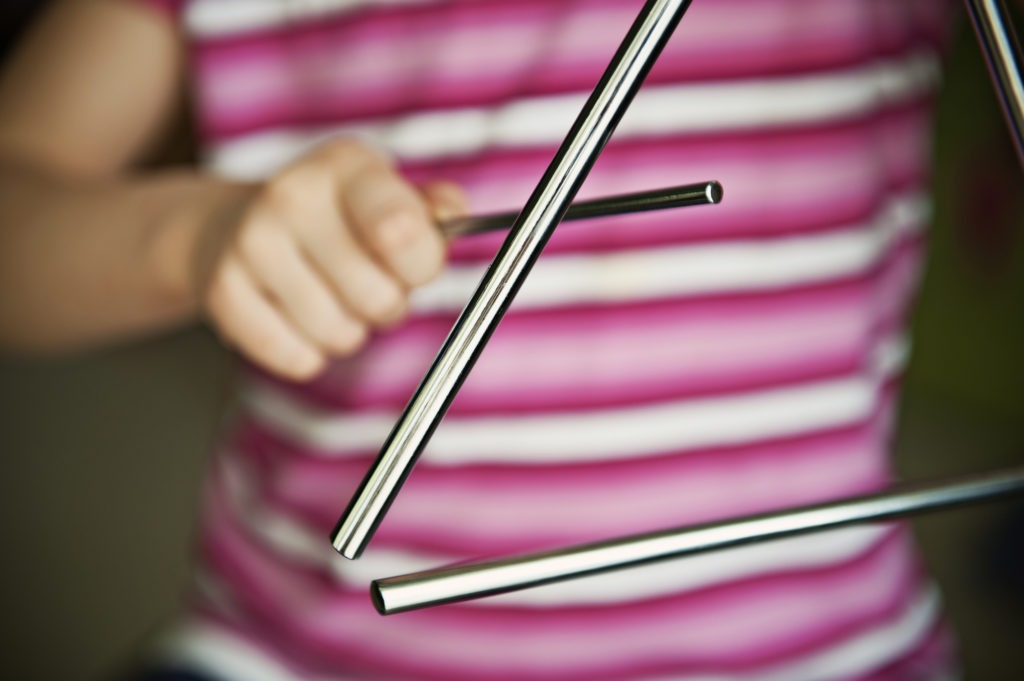
Parental Note: This experiment is geared towards ages 7 and up to be completed independently. The project may require some support to gather materials and to use a cell phone app or YouTube (optional).
Additional Note: This experiment will take roughly 45 minutes to complete.
Experiment Overview:
When you experience sound, what you are actually listening to is a wave produced by the vibration of tiny molecules (particles) in the air. Sound waves are a transfer of energy as it moves away from the source of vibration. Sound waves enter the ear, are received by the eardrum, and transferred into nerve signals, which are interpreted by the brain. Sound waves are often described in terms of the volume (amplitude) and the pitch (frequency) of the wave.
In this experiment, you will observe how sound waves travel through the air by using some common household objects and noisemakers.
Experiment Materials:
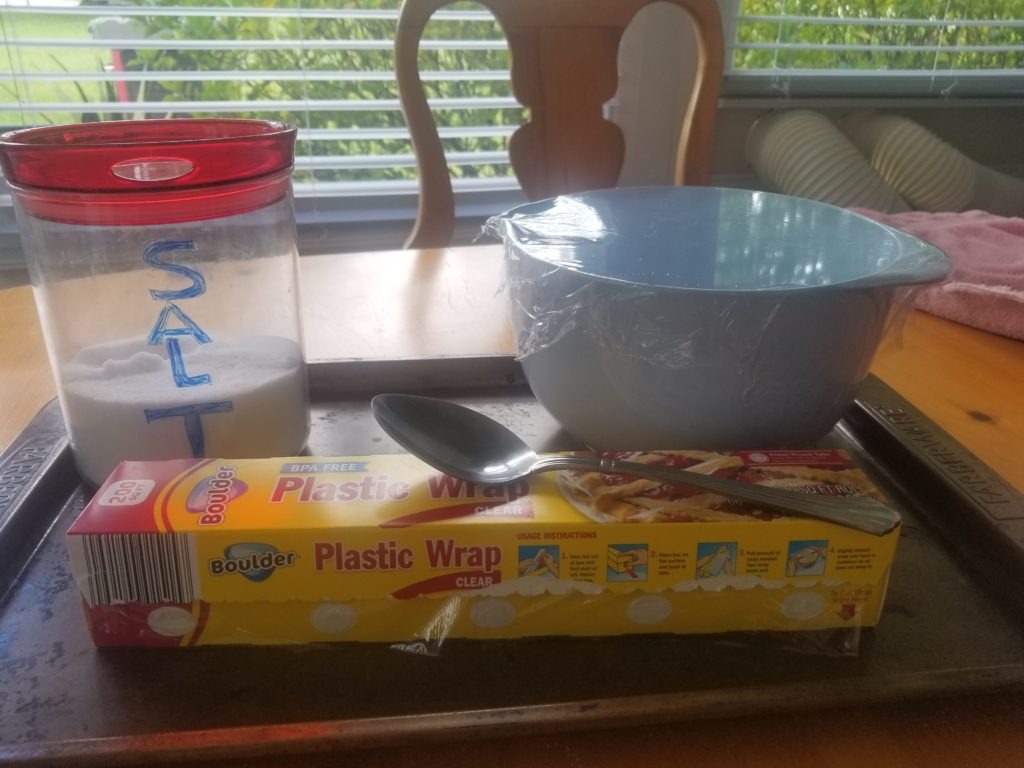
- Medium to a large bowl
- Plastic kitchen wrap
- Tablespoon of sugar, salt or fine sand
- Three noisemaking items: options include using your voice to hum, banging a metal spoon on a metal baking pan, small drum, kazoo, party blower, or any other small musical instrument that you have available.
Experiment Process:
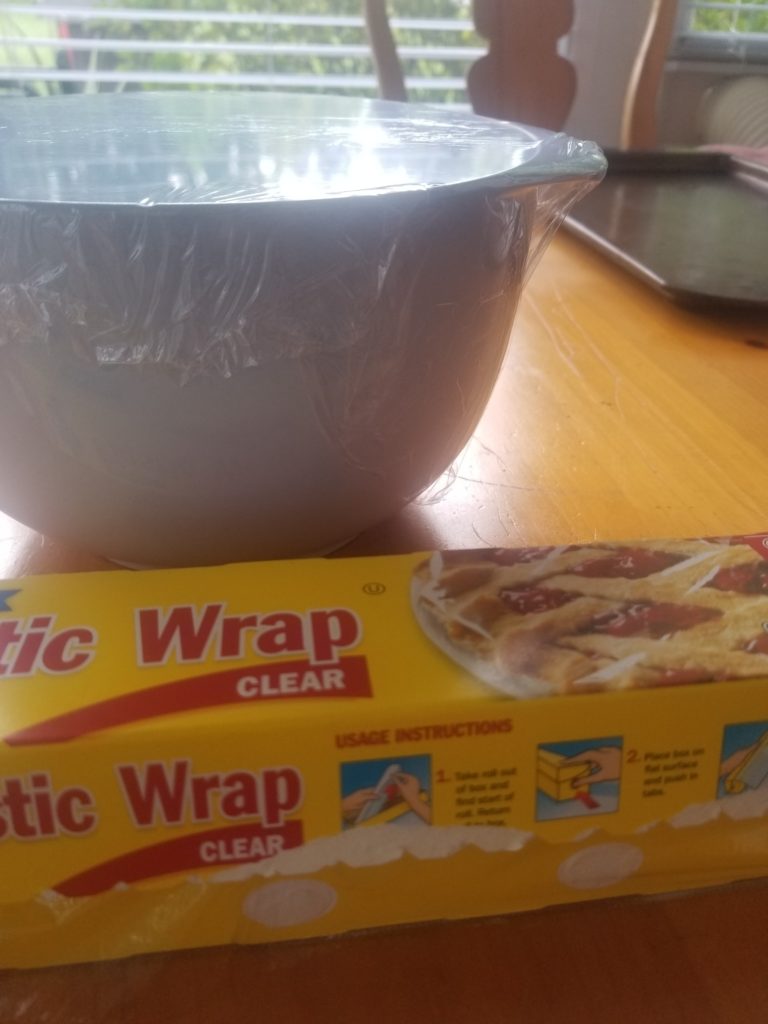
Step 1
Take your bowl and wrap it in plastic wrap, making sure that the area over the top of the bowl is tight and smooth.
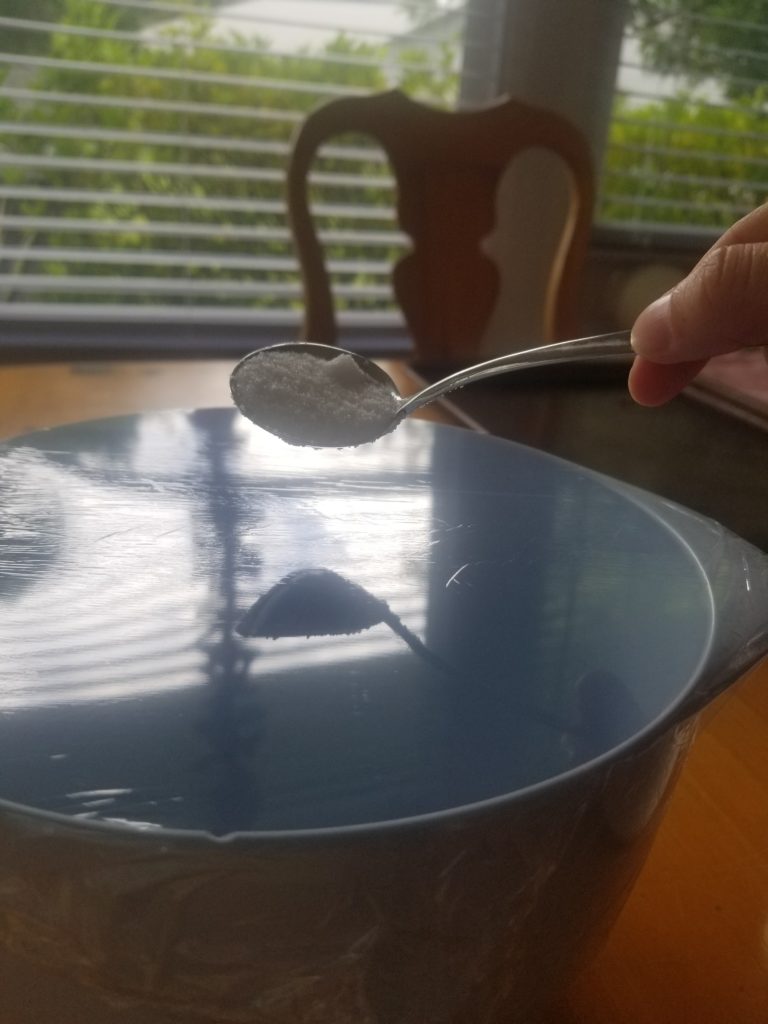
Step 2
Sprinkle your salt, sugar or sand onto the plastic wrap and use your fingers to gently spread it out evenly.
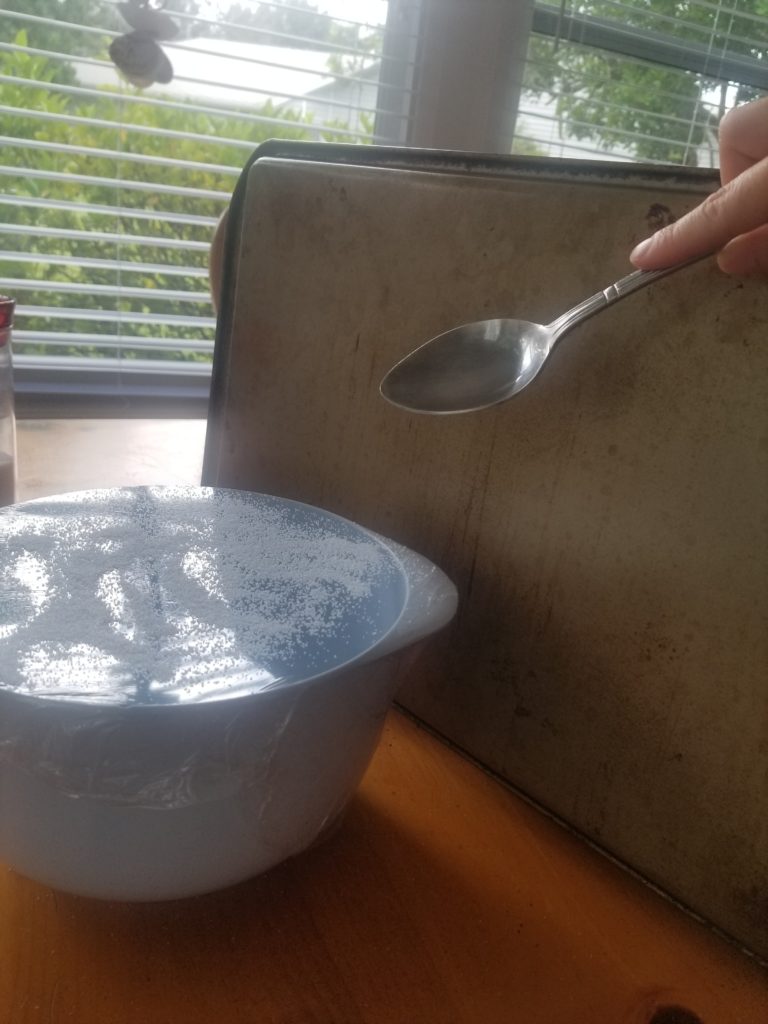
Step 3
Take your first noise-making device and get it as close to the bowl as possible without touching it. Play your first sound. Record what happens to the salt granules when you play the sound. What happens to the granules when you stopped playing the sound?
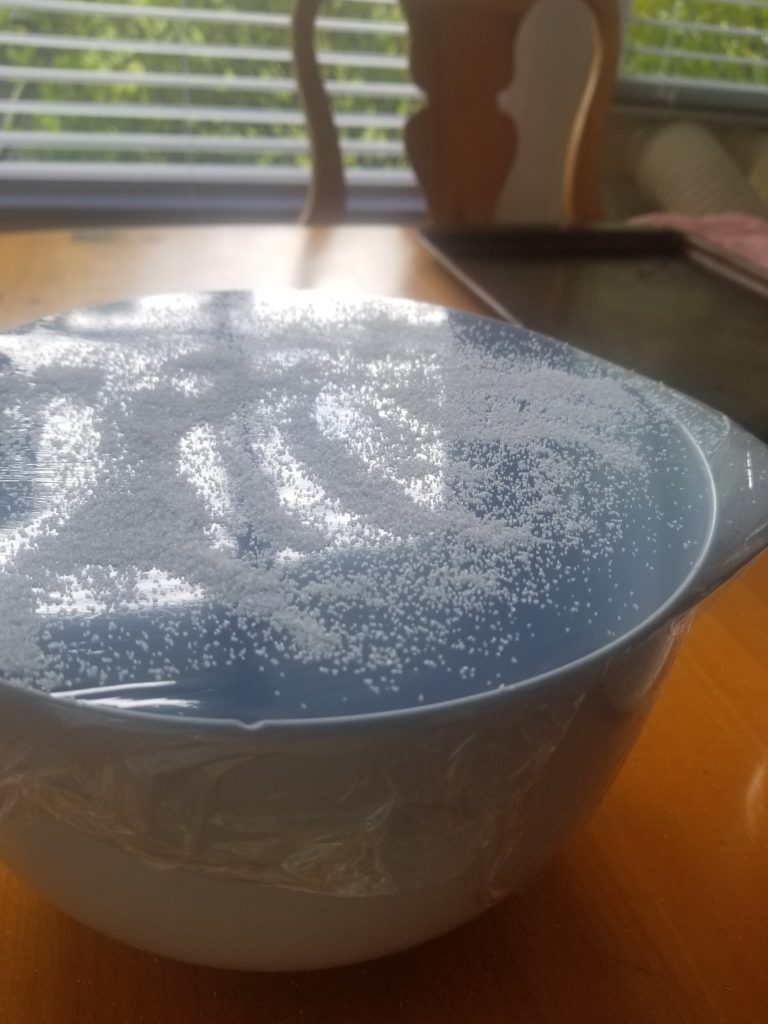
Step 4
Take your second noise-making device and get it as close to the bowl as possible without touching it. Play your second sound. Record what happens to the salt granules. Is the effect different than what you observed from playing the first sound?
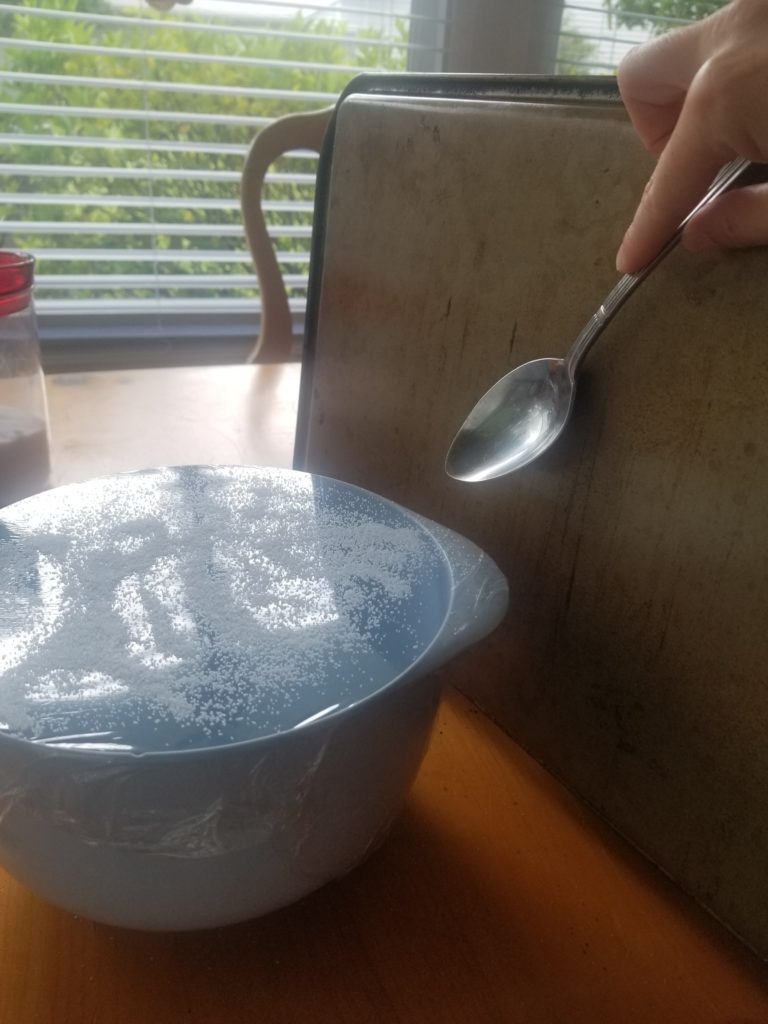
Step 5
Take your third noise-making device and get it as close to the bowl as possible without touching it. Play your third sound. Record what happens to the salt granules. Is the effect different than what you observed from playing the first and second sounds?
Conclusions:
Share Your Results:
- What caused the salt granules to move if nothing was touching them?
- Did you notice a difference in the way the granules moved when you played different types of sounds? What do you think would cause this difference?
Variations to Experiment:
To make this experiment more precise, you can place a wireless Bluetooth speaker inside of the bowl and play sounds at different frequencies. You can either download the tuner app on your phone and play different sounds from there, or you can use the following pre-recorded sounds on YouTube:
- 150 Hz: https://www.youtube.com/watch?v=cZaJzjMexfM
- 500 Hz: https://www.youtube.com/watch?v=GlEfshsoyZk
- 1000 Hz: https://www.youtube.com/watch?v=TbPh0pmNjo8
- 4000 Hz: https://www.youtube.com/watch?v=Dgq-ka1FkZk
Share your Results:
- When you played a sound using your musical instruments, what happened to the salt granules?
- How did the salt granules move if nothing was physically touching them?
- Did you notice any difference in the way the salt granules moved when you used different sound sources? Why do you think this happened?
Conclusions:
Sound waves can come from many different sources – voices, musical instruments, machinery, electronics – but all sounds are transmitted the same way; through vibrations. When a sound is created it causes molecules close to the sound source to vibrate. When one molecule vibrates, it causes the molecules touching to vibrate too. This continues, from one molecule to the next, passing the energy on as it goes in the form of a wave. A little bit of energy is lost along the way at each molecule, which is why sounds get quieter the farther away you are from the source.
Extension:
There are many pleasant and welcoming sounds that people often say they love to hear, such as birds chirping, and then there are sounds that many people find to be unpleasant, such as chalk squeaking on a chalkboard. The air around us is constantly filled with sounds, many of which you may not always notice as you go about your day, such as the breeze blowing and rustling leaves. Depending on where you live, there may also be noise always playing in the background that perhaps you do notice and are bothered by, such as the humming of fans, motors and water pumps in the cooling towers of a coal, natural gas or nuclear power plant (listen to an example here: (https://www.youtube.com/watch?v=dSiaU5LTjlI). We call this noise pollution.
Noise pollution is any unwanted, disturbing, and/or excessive sound that affects the health and well-being of a person or wildlife. Noise pollution affects the lives of millions of people, causing problems such as stress-related illnesses, high blood pressure, speech interference, hearing loss, lack of sleep, and lost productivity.
Extension Activity and Questions
Turn off your TV, cell phone, and any other electronic devices that are on in your house and sit in silence for one full minute.
- What different sounds do you hear? Write them down here.
- Do any of these sounds fit the definition of noise pollution?









